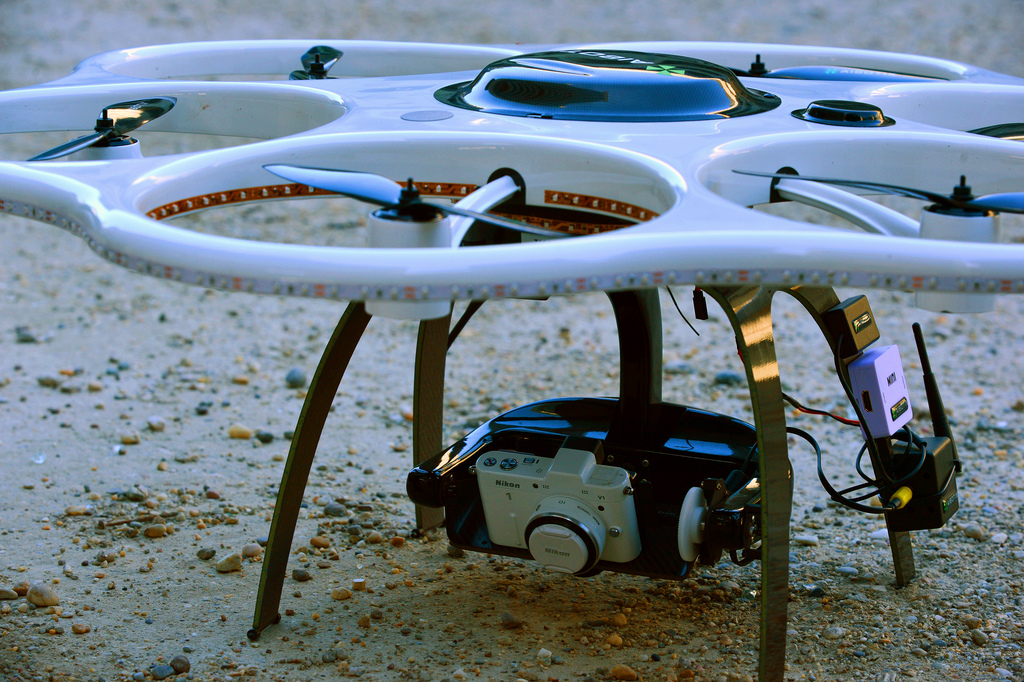 David Golumbia and David Simpson begin a conversation, inviting comment below or via email to boundary 2:
David Golumbia and David Simpson begin a conversation, inviting comment below or via email to boundary 2:
What are we talking about when we talk about drones? Is it that they carry weapons (true of only a small fraction of UAVs), that they have remote, mobile surveillance capabilities (true of most UAVs, but also of many devices not currently thought of as drones), or that they have or may someday have forms of operational autonomy (a goal of many forms of robotics research)? Is it the technology itself, or the fact that it is currently being deployed largely by the world’s dominant powers, or the way it is being deployed? Is it the use of drones in specific military contexts, or the existence of those military conflicts per se (that is, if we endorsed a particular conflict, would the use of drones in that scenario be acceptable)? Is it that military use of drones leads to civilian casualties, despite the fact that other military tactics almost certainly lead to many more casualties (the total number of all persons, combatant and non-combatant, killed by drones to date by US operations worldwide is estimated at under 4000; the number of civilian casualties in the Iraq conflict alone even by conservative estimates exceeds 100,000 and may be as many as 500,000 or even more), a reduction in total casualties that forms part of the arguments used by some military and international law analysts to suggest that drone use is not merely acceptable but actually required under international law, which mandates that militaries use the least amount of lethal force available to them that will effectively achieve their goals? If we object to drones based on their use in targeted killings, do we accept their use for surveillance? If we object only to their use in targeted killing, does that objection proceed from the fact that drones fly, or do we actually object to all forms of automated or partly-automated lethal force, along the lines of the Stop Killer Robots campaign, whose scope goes well beyond drones, and yet does not include non-lethal drones? How do we define drones so as to capture what is objectionable about them on humanitarian and civil society grounds, given how rapidly the technology is advancing and how difficult it already is to distinguish some drones from other forms of technology, especially for surveillance? What do we do about the proliferating “positive” use cases for drones (journalism, remote information about forest fires and other environmental problems, for example), which are clearly being developed in part so as to sell drone technology in general to the public, but at least in some cases appear to describe vital functions that other technology cannot fulfill?
_____
What resources can we call upon, invent or reinvent in order to bring effective critical attention to the phenomenon of drone warfare? Can we revivify the functions of witness and testimony to protest or to curtail the spread of robotic lethal violence? What alliances can be pursued with the radical journalism sector (Medea Benjamin, Jeremy Scahill)? Is drone warfare inevitably implicated in a seamlessly continuous surveillance culture wherein all information is or can be weaponized? A predictable development in the command-control-communication-intelligence syndrome articulated some time ago by Donna Haraway? Can we hope to devise any enforceable boundaries between positive and destructive uses of the technology? Does it bring with it a specific aesthetics, whether for those piloting the drones or those on the receiving end? What is the profile of psychological effects (disorders?) among those observing and then killing at a distance? And what are the political obligations of a Congress and a Presidency able to turn to drone technology as arguably the most efficient form yet devised for deploying state terrorism? What are the ethical obligations of a superpower (or indeed a local power) that can now wage war with absolutely no risk to its own combatants?

Leave a Reply